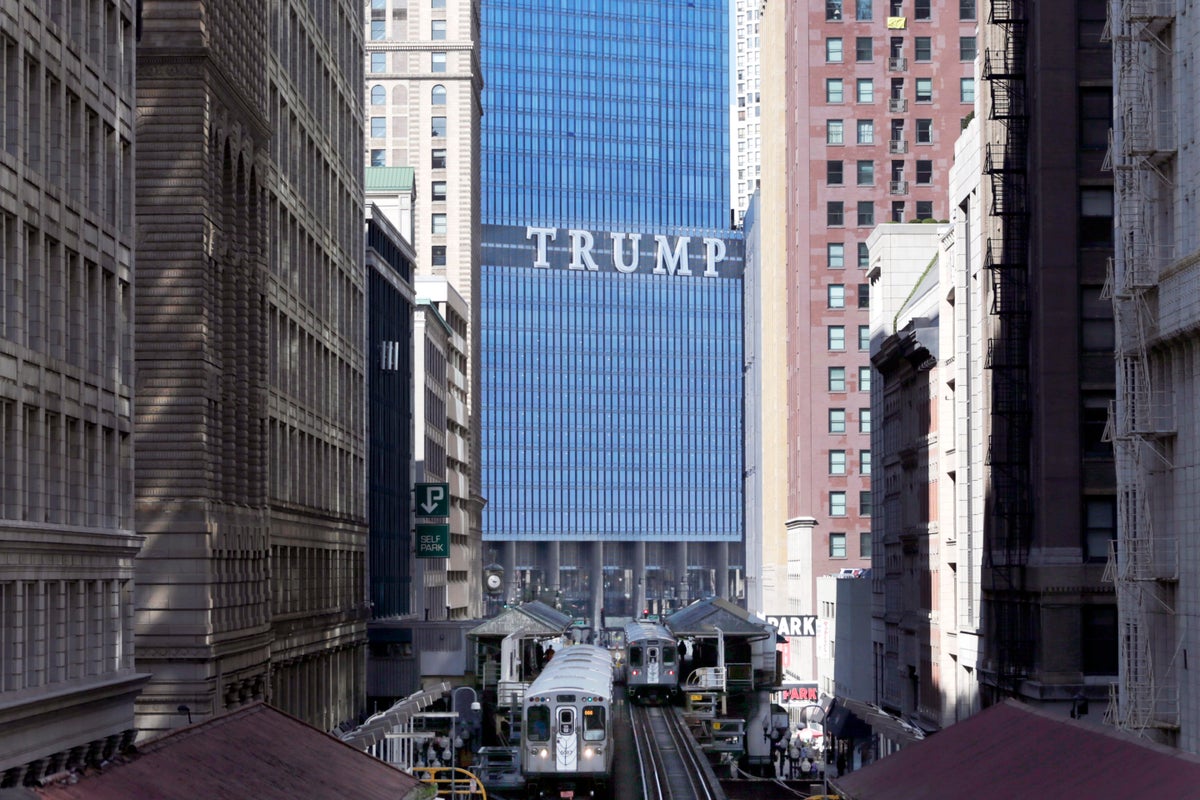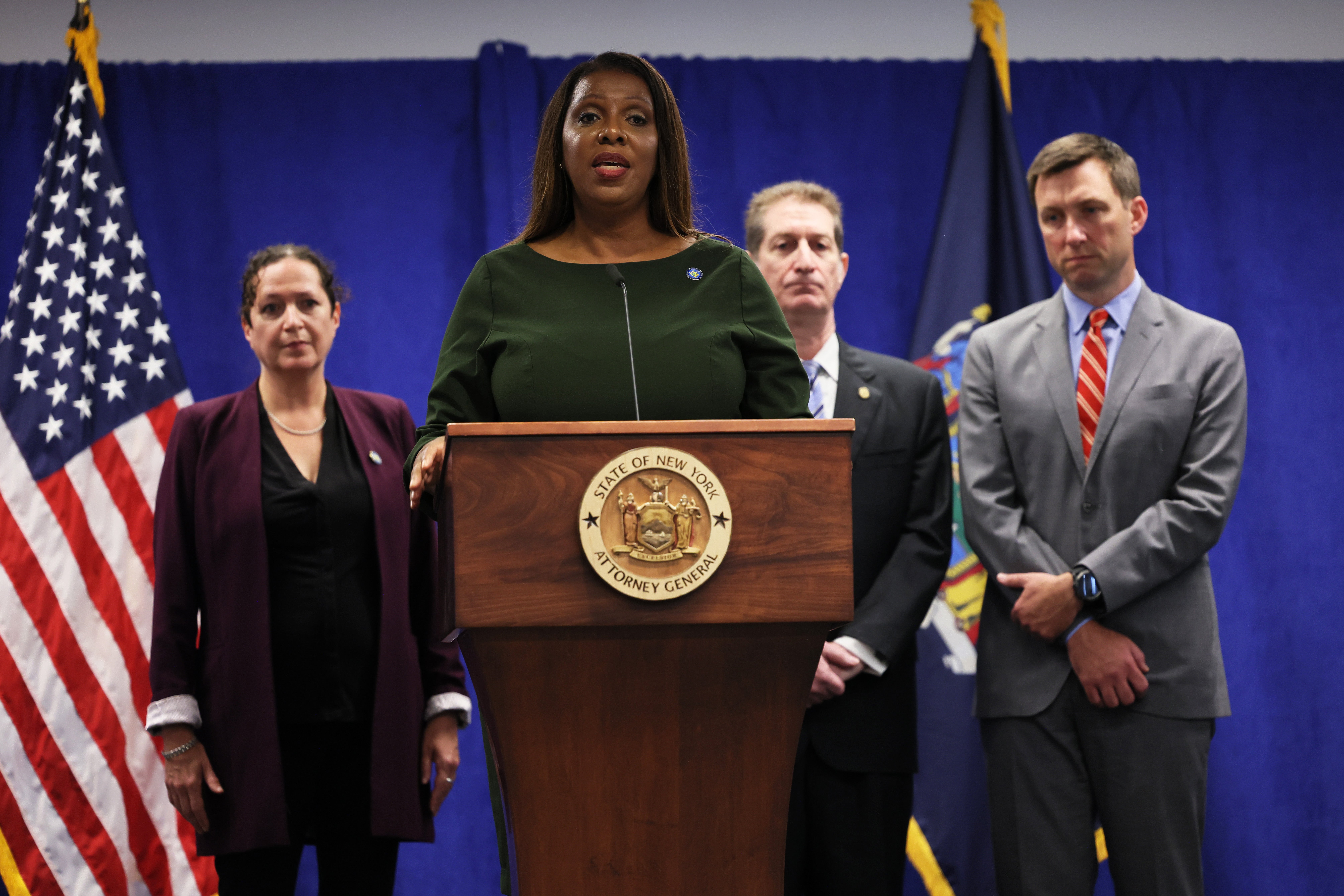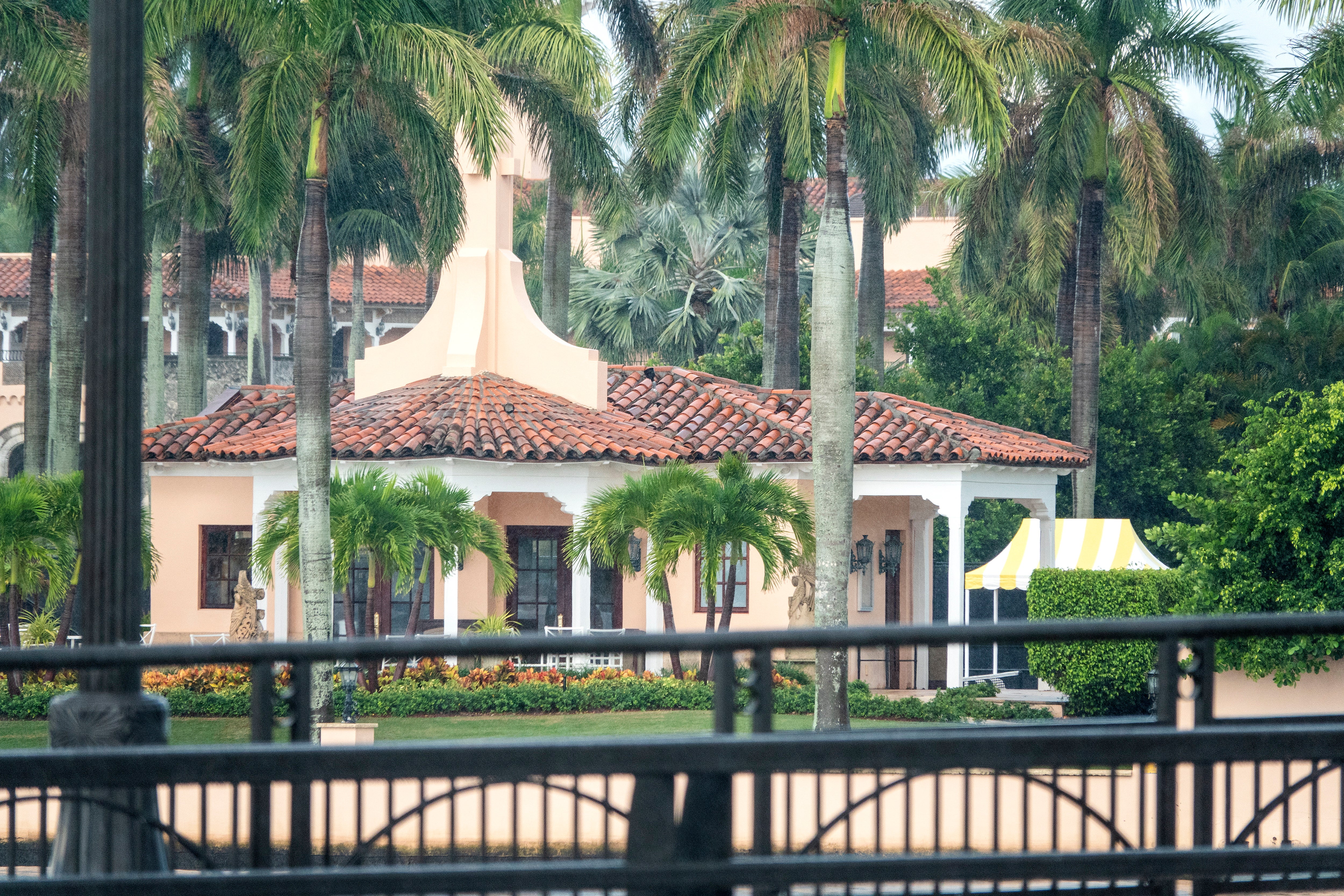
Donald Trump’s real estate empire engaged in an “astounding” level of fraud and deceptive business practises over more than a decade, during which the former president and his associates “grossly and fraudulently” inflated the value of his properties to obtain tax, loan and insurance incentives while boosting his financial ambitions, according to New York Attorney General Letitia James.
A bombshell 222-page civil suit alleges that Mr Trump inflated his net worth to “deceive banks and the people of the great state of New York,” Ms James told reporters on 21 September.
She described the multiple “statements of financial condition” prepared by his former accounting firm for nearly all of Mr Trump’s marquee properties as “exaggerated, grossly inflated, objectively false, and therefore fraudulent, and illegal”.
The lawsuit follows a three-year civil investigation into at least 23 of his properties and assets, from his Mar-a-Lago resort home in Florida to his namesake tower in Manhattan and golf courses in Scotland.
Ms James’s office found that at least 11 of Mr Trump’s annual financial statements included more than 200 false and misleading asset valuations.
“The number of grossly inflated asset values is staggering, affecting most if not all of the real estate holdings in any given year,” according to the lawsuit.
The attorney general is seeking to permanently bar Mr Trump as well as his children Donald Trump Jr, Ivanka Trump and Eric Trump from holding any offices with any New York businesses, and to bar Mr Trump and his business from entering any real estate deals in the state for five years, and to forfeit a quarter billion dollars obtained through allegedly ill-gotten gains obtained through his “persistent” fraud.
These are the properties and assets that the office of the attorney general alleges were central to a fraudulent scheme orchestrated by Mr Trump and his business allies.
Trump Park Avenue
The property was valued on Mr Trump’s financial statements with values ranging from $90.9m and $350m from 2011 to 2021, according to the office of attorney general.
“Reported values of the unsold residential units of the Trump Park Avenue building were significantly higher than the internal valuations used by the Trump Organization for business planning and failed to account for the fact that many units were rent-stabilized,” Ms James’s office said.
In July 2020, the Trump Organization received an appraisal that valued the property at $84.5m. But a 2020 financial statement valued the property at $135.8m.
Trump Tower
Valuations for Mr Trump’s namesake tower relied on “cherry-picked” data and inflated figures that did not match internal protections, according to Ms James’s office. In 2015, using a different formula, the property was valued $170m higher than the previous year’s value, and nearly $250m more than the following year’s value, and $75m higher than the value derived in any other year using the formula that was previously used.
Triplex Apartment at Trump Tower
The former president’s personal triplex apartment in Manhattan was valued as being 30,000 square feet, but it is less than 11,000 square feet, according to the office of attorney general.
In 2015, the apartment was valued at an “absurd” price of $327m, putting the value at $29,738 per square foot, according to Ms James’s office.
“In 30-year-old Trump Tower, the record sale at that time was a mere $16.5m at a price of less than $4,500 per square foot,” according to her office.
40 Wall Street
According to Ms James’s office, the property was appraised by a bank in 2012 with a value of $220m, “yet in the statement that year and the next year … 40 Wall Street was valued at $527m and $530m – more than twice the value calculated by the independent, professional appraisers.”
Seven Springs, Westchester County, New York
Mr Trump bought the 212-acre estate property in 1995 for $7.5m but was valued at up to $291m over the past decade based on claims that the property was zoned for nine mansions that could be sold for a profit of more than $161m, a “fiction, totally unsupported” by the development’s history, according to Ms James’s office.
Niketown, New York
On “multiple occasions” from 2011 to 2019, Mr Trump provided “false and misleading representations” of the property’s value, while valuations from 2013 to 2018 (except for 2015) omitted “key variables” including rental expenses.
“When the escalating scheduled rent expenses were factored into the 2020 and 2021 valuations of Niketown, despite increased revenue assumptions, the property’s reported value dropped from the mid-$400m range to the $225-$250m range,” according to Ms James’s office.

Trump International Hotel and Tower, Las Vegas, Nevada
Prior to 2013, financial statements omitted Mr Trump’s 50 per cent interest in the property “because, for tax purposes, Mr Trump asserted that the property had no value,” according to Ms Jame’s office. Meanwhile, Mr Trump “repeatedly submitted lower property valuation estimates to Nevada tax authorities and higher property valuations on his statements.”
Vornado
Mr Trump held a minority stake in the business, but his financial statements often included cash that was held by this entity. “In some years these restricted funds accounted for almost one-third of all the cash reported by Mr Trump,” according to Ms James’ office.
Mar-a-Lago
The former president’s Florida resort property was valued as high as $739m but “in reality, the club generated annual revenues of less than $25 million and should have been valued at closer to $75 million.”
Trump’s golf clubs
Ms James’s office outlines several schemes frequently used to allegedly inflate the value of Mr Trump’s golf clubs.
He allegedly did not itemize each club but instead “presented their value as a single aggregated line item,” according to the lawsuit.
At Trump National Golf Club Westchester in Briarcliff Manor, New York, the property’s valuation hinged on anticipated income from inflated membership figures, according to the suit. In 2011, that depended on new members paying a nearly $200,000 fee, though most never did. Mr Trump also “specifically directed” employees to “reduce or eliminate” initiation fees to drive up memberships, according to Ms James’s office.
Other schemes allegedly boosted the value of the former president’s clubs in North Carolina, New York, New Jersey, Philadelphia and Virginia, according to the lawsuit.
Mr Trump bought his Trump National Golf Club Jupiter in Jupiter, Florida for $5m, but the property was valued at $62m less one year later in 2013 – a 1,100 per cent markup, according to the lawsuit.

The Trump Organization “falsely inflated the value” of Trump National Golf Club Los Angeles “by inflating the value for a substantial number of potential lots for sale in the areas around the golf course and, starting in 2013 to 2020, applying an undisclosed 30 per cent brand premium that inflated the value of the golf club,” according to Ms James’s office.
The premium scheme allegedly created a nearly $50m increase in the valuation of the golf club in a 2013 statement.
The Trump Organization also donated 16 lots, at a $25m value that was reached “through tactics that fraudulently manipulated the valuation, including ignoring a report prepared by an engineer to assess the costs of developing the lot” and failing to account for cost savings from a nearly $1m obligation that the company avoided by not having to develop affordable housing units there.
Trump International Golf Links Scotland (Aberdeen)
The golf course was valued at $327m in 2014, based on the Trump Organization’s claim that 2,500 homes could be developed on the property, though the company only received zoning approval to build fewer than 1,500 units, according to the lawsuit. The units proposed by the Trump Organization accounted for 80 per cent of the company’s total valuation.
Trump International Golf Links Scotland (Turnberry)
The course has operated at a loss since opening in 2017, after it was purchased in 2014 for $60m with values between $123m and $126.8m in subsequent years, according to the suit, which alleges that the Trump Organization has relied on a “false and misleading” valuation and should have been valued at a much lower figure.
Trump International Hotel & Tower, Chicago
The property has not been included on Mr Trump’s financial statements since 2009 because “according to sworn testimony, Mr Trump did not want to take a position that would conflict with his contention to tax authorities that the property had become worthless, and thus formed the basis of a substantial loss under the federal tax code.”
But in 2012, Mr Trump and the Trump Organization obtained a $107m loan on the building from Deutsche Bank. The loan received a $45 million expansion in 2014, and “Mr Trump’s supposed net worth of $4bn reflected in his statement was used to personally guarantee the initial loan” with a lower, more-favourable interest rate, according to Ms James’s office.
Trump National Doral, Miami, Florida
A loan agreement required for the property obtained through Deutsche Bank required that Mr Trump “certify the truth and accuracy” of his statements as a condition of the loan.
Trump Old Post Office, Washington DC
The Trump Organization obtained a $170m loan from Deutsche Bank to turn the property into a luxury hotel, then sold the property for $375m in 2022 – resulting in “more than $100m in net profit, which was the result of the loan he was able to obtain by using his false and misleading statements,” according to the office of attorney general.







